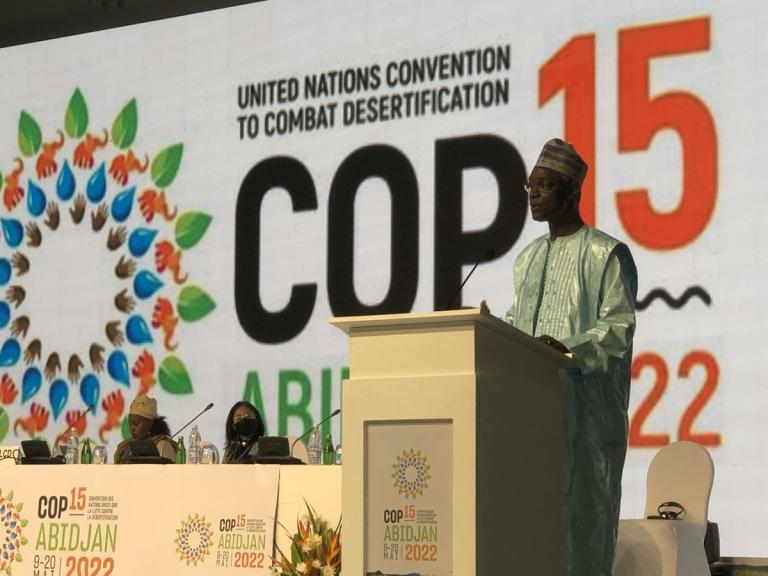Step up action on drought
Humanity is “at a crossroads” when it comes to managing drought and there is an urgent need to accelerate mitigation using every tool possible, says a new report from the United Nations Convention to Combat Desertification (UNCCD)

Humanity is “at a crossroads” when it comes to managing drought and there is an urgent need to accelerate mitigation using every tool possible, says a new report from the United Nations Convention to Combat Desertification (UNCCD).
Drought In Numbers, 2022 was released on 11 May to mark Drought Day at UNCCD’s 15th Conference of Parties (COP15, 9-20 May in Abidjan, Côte d’Ivoire. It calls for full global commitment to drought preparedness and resilience in all global regions a top priority.
The report, an authoritative compendium of drought-related information and data, helps inform negotiations of one of several decisions by UNCCD’s 196 member states, to be issued 20 May at the conclusion of COP15.
“The facts and figures of this publication all point in the same direction: an upward trajectory in the duration of droughts and the severity of impacts, not only affecting human societies but also the ecological systems upon which the survival of all life depends, including that of our own species.” says Ibrahim Thiaw, Executive Secretary of the UNCCD.
The report was issued ahead of WMO’s own State of the Global Climate in 2021 report on 18 May, which will highlight the debilitating impacts of drought in parts of the world such as the Horn of Africa.
In a video message prepared for the conference, WMO Secretary-General Prof. Petteri Taalas highlighted WMO initiatives that seek to tackle the problem of drought. For instance, WMO is working to extend the coverage of early warning services – including for flash floods and drought and sand and dust storms and to strengthen the hydrological observing system as part of a wider Water and Climate Coalition.
The challenges are growing.
“There has been a decrease in soil moisture in many parts of the world and that’s very striking when it comes to agricultural production. We have seen a

boost in the melting of glaciers which means we are getting less freshwater in rivers. We have seen changes in rainfall patterns. Some parts of the world getting drier and some parts of world more flooding problems,” said Prof. Taalas.
WMO and the Global Water Partnership (GWP) co-sponsors the Integrated Drought Management Programme (IDMP) and partners with about 40 partner organizations including UNCCD, FAO, UNESCO and many others. IDMP has developed the three pillars of integrated drought management: 1) drought early warning and monitoring, 2) drought vulnerability and risk assessments and 3) risk mitigation, preparedness and response.
At the last session of the Drought Day, WMO moderated a session with IDMP partners on organizing a follow-up to the 2013 High-Level Meeting on National Drought Policies that would take place sometime in 2023 to advocate countries to put their drought policies into action.
The Drought in Numbers report creates a compelling call to action. For example:
- Since 2000, the number and duration of droughts has risen 29%
- From 1970 to 2019, weather, climate and water hazards accounted for 50% of disasters and 45% of disaster-related deaths, mostly in developing countries
- Droughts represent 15% of natural disasters but took the largest human toll, approximately 650,000 deaths from 1970-2019
- From 1998 to 2017, droughts caused global economic losses of roughly USD 124 billion
- In 2022, more than 2.3 billion people face water stress; almost 160 million children are exposed to severe and prolonged droughts.
One of the best, most comprehensive solutions is land restoration, which addresses many of the underlying factors of degraded water cycles and the loss of soil fertility. We must build and rebuild our landscapes better, mimicking nature wherever possible and creating functional ecological systems, says the report.
Beyond restoration is the need for a paradigm shift from ‘reactive’ and ‘crisis-based’ approaches to ‘proactive’ and ‘risk-based’ drought management approaches involving coordination, communication and cooperation, driven by sufficient finance and political will.










